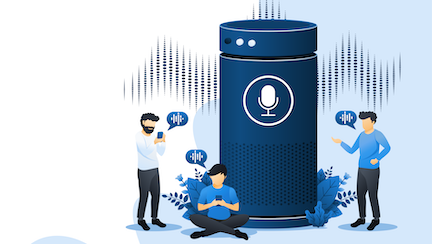
The fatal fallacy in marketing technology to business.
I tell clients that the irony for people who sell and market technology through content is that technology is the last thing that you are, in fact, selling to your prospective customer.
What you are really selling is a disruption of the relationships and balance of power in their company or system. Sound a little scary? For your customer, it may be. That’s why you need to be conscious of this dynamic when you sell technology. It’s a help to some. A threat to others.
Technology like Microsoft Word software and personal computers eventually replaced secretarial pools. Human resources software like Bamboo HR reduced once larger HR staffs. Remote cloud servers threaten to idle the IT server maintenance staff in your office. Uber and Lyft ride-sharing technology replaced taxicabs and drivers that sometimes just “weren’t in the mood” to pick you up.
Technology means change. People don’t always like change.
An introduction of a new technology must convince customers and their staff to disrupt their current relationships and the power structures within their company that may be involved with adopting the technology. Business to customer and/or employee to employee. It’s the benefit seen from that disruption created and who stands to gain from it that will make or break the sale of your technology.
Technology is personal because its adoption relies on people’s narcissistic value and focus. “What does this product do for me?” “How does it help me?” “How does it protect me or my job?”
What makes this fear of technology by a business or organization different than a technology around a consumer item? It’s that adopting your app-enabled toothbrush doesn’t affect other peoples’ self-interests or the way they brush. The toothbrush’s limited scope of use won’t demand changes to the accounting department or threaten IT jobs.
In other words, technology marketing in the business enterprise space must deal with a distributed version of narcissism: “What in this technology for us? (But I really mean me).”
While your department may push for the technology because your team will be more productive, another group’s self-interest can perceive the same technology as a threat and try to stop or limit the purchase.
It makes sense. A business is just an organization of people. And the one thing the acquisition of technology does is change the relationship between people as it empowers some and can weaken others.
When we develop marketing content to sell technology, we must be subconscious about the audiences, their fears, insecurities and other dynamics.
The audiences your technology pitch must balance:
- The visionaries.
CEO and senior leadership who see the technology as helping them realize an operating or corporate vision (make us stronger, fast, agile, profitable, save money).
- Priests of the temple.
These are people who have been in power due to the fact they have been in control of the information or a process that others in the organization don’t understand or can’t do themselves.
A technology that empowers former priest worshipers to understand it, or use it without assistance, weakens and threatens the stature of the priests. Their power comes from being the informational spigot for tech or process salvation. If the new technology creates new rivers of information flow and control, they could lose influence and possibly their jobs.
- Anyone whose job can be automated through technology.
Often IT makes industry expertise more available or changing the balance of IT power by commoditizing it. Through the internet, an expert radiologist in a hospital in New Jersey can have their work and analytics skills moved to am equally killed radiologist in Mumbai.
- Slackers.
There are areas where the lack of technology or poor technology can hide lazy or incompetent work and workers. When a technology comes along that is more efficient and creates transparency around those who formerly worked (or hid their lack of work) in the shadows can be threatened.
- New owners or departments seeking to acquire power or influence.
Technology is power. Like any power, people who can acquire and control more of it become powerful. For example, not too long ago, all tech fell under IT. Now increasingly, decisions and control of tech decisions are leaning towards the CMO suite. In turn, that changes the CMO relationship and influence in the organization.
- Purchasers and financial relationships.
A company or a department could have a long-standing and comfortable relationship with a vendor. Technology that causes a shift to a new vendor, can threaten an existing financial relationship or those Eagles tickets a vendor always has for you.
Anyone who’s been at an organization that’s re-organized, hired, moved or fired personnel knows that changes, even what seems to be a small one, is a tectonic shift. It can create hurt feelings, new workloads and responsibilities and uncertain futures. It may be better for the firm in the long-run but it still creates a disruption. Technology does the same thing.
So it’s not always about how great your technology is. It’s what does your technology means to the work process, fortunes, balance of power to the company.
As you look at your “pain point” sales sheet focused around logical benefits your technology addresses, don’t forget, often the illogical ones are the ones that lock in the sale.
Or for content marketing, have other materials that can be shared to empowers the promoters of your technology the messaging they need to allay the fears and concerns of other departments and groups.
CONTENT STRATEGY CONSULTING
Content strategy is defining today’s successful business and leaving those too slow behind. Looking for more ideas and strategies around content marketing and delivering satisfying digital experiences for your brand, website or mobile application contact me for a free consultation.































